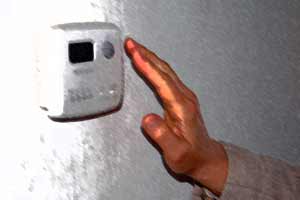 The U.S. Environmental Protection Agency (EPA) Energy Star program has promoted programmable thermostats since 1995, estimating that consumers will save 10%-30% on their heating and cooling energy bills. Consumers who can accurately predict when they will be home, and who find it difficult to remember to set up their thermostat in the summer or set back their thermostat in the winter manually, can save energy with a programmable thermostat.
The U.S. Environmental Protection Agency (EPA) Energy Star program has promoted programmable thermostats since 1995, estimating that consumers will save 10%-30% on their heating and cooling energy bills. Consumers who can accurately predict when they will be home, and who find it difficult to remember to set up their thermostat in the summer or set back their thermostat in the winter manually, can save energy with a programmable thermostat.
With sales of programmable thermostats doubling in the last ten years, and with more than 25 million programmable thermostats installed in homes, the potential energy savings are enormous. But it appears that those savings have remained largely unrealized.
Now Energy Star plans to stop certifying programmable thermostats. The results of this decision may be far-reaching. For example, programs such as Energy Star Homes, which recognizes homes that are especially energy efficient, will no longer be able to award points for programmable thermostats. Why stop certifying? Energy Star examined several studies covering a wide geography and a variety of climates, that compared the energy use of homes with programmable thermostats to the energy use of homes without them. It found that there was no statistical difference in savings between the two groups.
Jill Abelson, a communications manager at EPA, offers some insight. Her research shows that consumers find programmable thermostats too complicated, or they override the default savings mode on the thermostats. Once the default setting has been overridden, they forget to return to it.
The California Energy Commission (CEC) has included programmable thermostats as a requirement in the California Title 24 building standards since the early 1980s. The commission is currently considering a requirement for programmable communicating thermostats in the next update of the standards.
